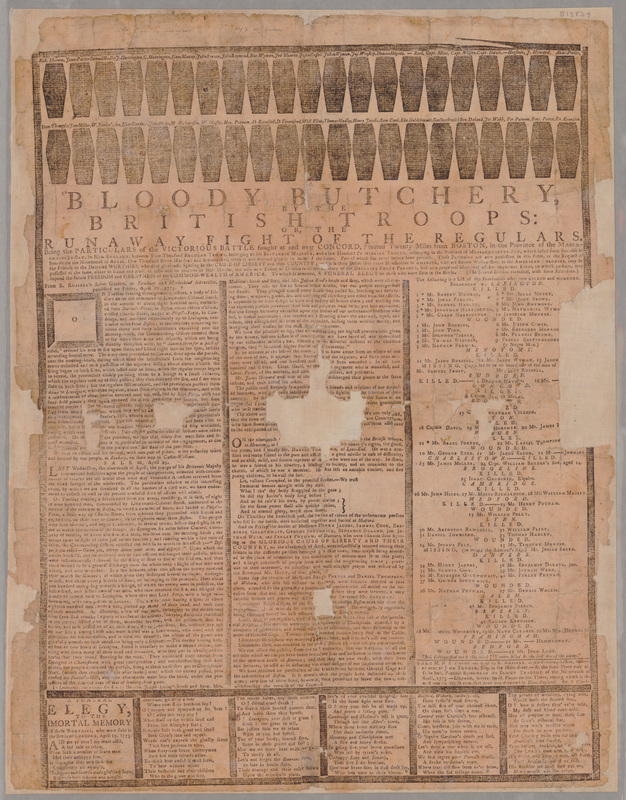“He engages in the fight which was the beginning of the end”
As stated in the preface to the 1874 edition of Thomas’s History of Printing in America:
He went out on the night of the 18th of April, to assist in giving notice that the troops were crossing the Charles river. He returned, but was out again by daylight. Crossing the ferry with Dr. [Joseph] Warren he went into a public meeting at Charlestown and urged the arming of the people, and was opposed by one Mr. [James?] Russell “on principles of prudence.”Gen. Thomas Gage ordered his forces to stop anyone trying to leave Boston via the Neck or the ferry on the night of 18 April, so as to prevent the sort of “notice” Thomas supposedly spread.
Not only did the printer get out of town, this family lore said, but he then got back in. Even though one of the main points of this passage was that Thomas was on the royal authorities’ enemies list.
We know Dr. Warren did get out of Boston early on the morning of 19 April. Richard Frothingham’s 1865 biography of the doctor quoted witnesses saying he rode the ferry to Charlestown, then headed west on horseback.
We also know there was debate in Charlestown about whether to oppose the British army by force. Ultimately most of the townspeople decided to hunker down because they were too vulnerable to counterattack from the army and navy.
As to what Isaiah Thomas did in those busy hours, I’m not sure. He definitely did thrust himself into events at other times, so I’m sure he would have spread the alarm and urged opposition to the troops if he could. I’m just not sure the opportunities were available.
For a couple of paragraphs, the 1874 account slips into a breathless present tense.
As one of the minute men, he [Thomas] engages in the fight which was the beginning of the end. At night he goes to Medford. On the morning of the 20th, he makes a flying visit to his family at Watertown, and then starts on foot for Worcester.The printer may well have had debts due him, but he was also being sued for debt he owed. The war, a new government, and a new town offered the possibility of a new start.
He is constantly met on his journey by bodies of armed men on their way to Cambridge, anxious to learn even the minutest details of yesterday’s fight. After traveling on foot some miles, he meets with a friend who procures him the loan of a horse. Late at night, weary and travel worn, he arrives at Worcester to begin life anew; a good head and stout heart his only capital. . . .
The presses and types sent before him were all that were left as the fruit of five years’ toil and peril. A sum exceeding three thousand dollars (and a dollar meant something then, though soon to lose its meaning) was due him from subscribers, scattered over the continent.
Isaiah Thomas struggled through the war years but prospered in the new republic. He settled in Worcester, publishing the Massachusetts Spy and many books from that town, and also invested in other print shops and newspapers. Ultimately his estate was solid enough that he set up the American Antiquarian Society to maintain his printing archive and tell his story his way.
TOMORROW: How another printer left Boston.



















